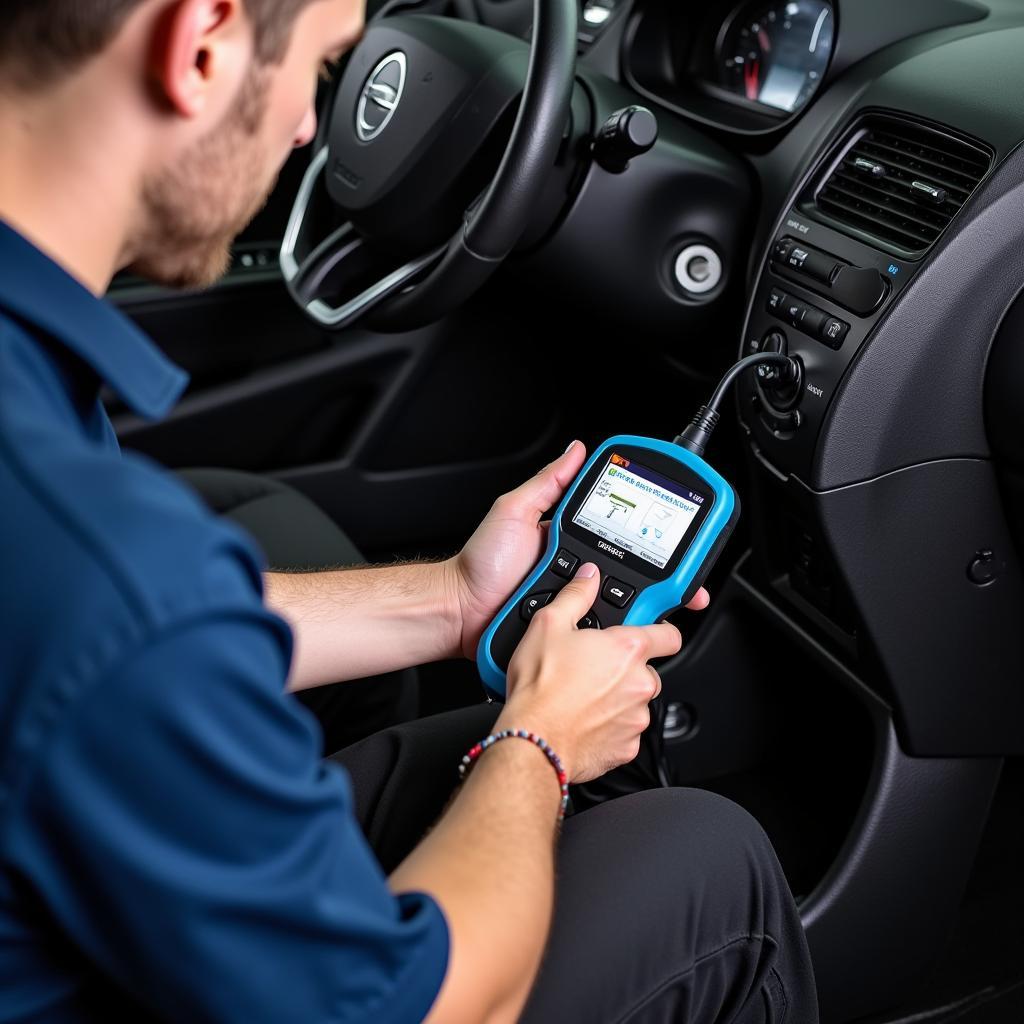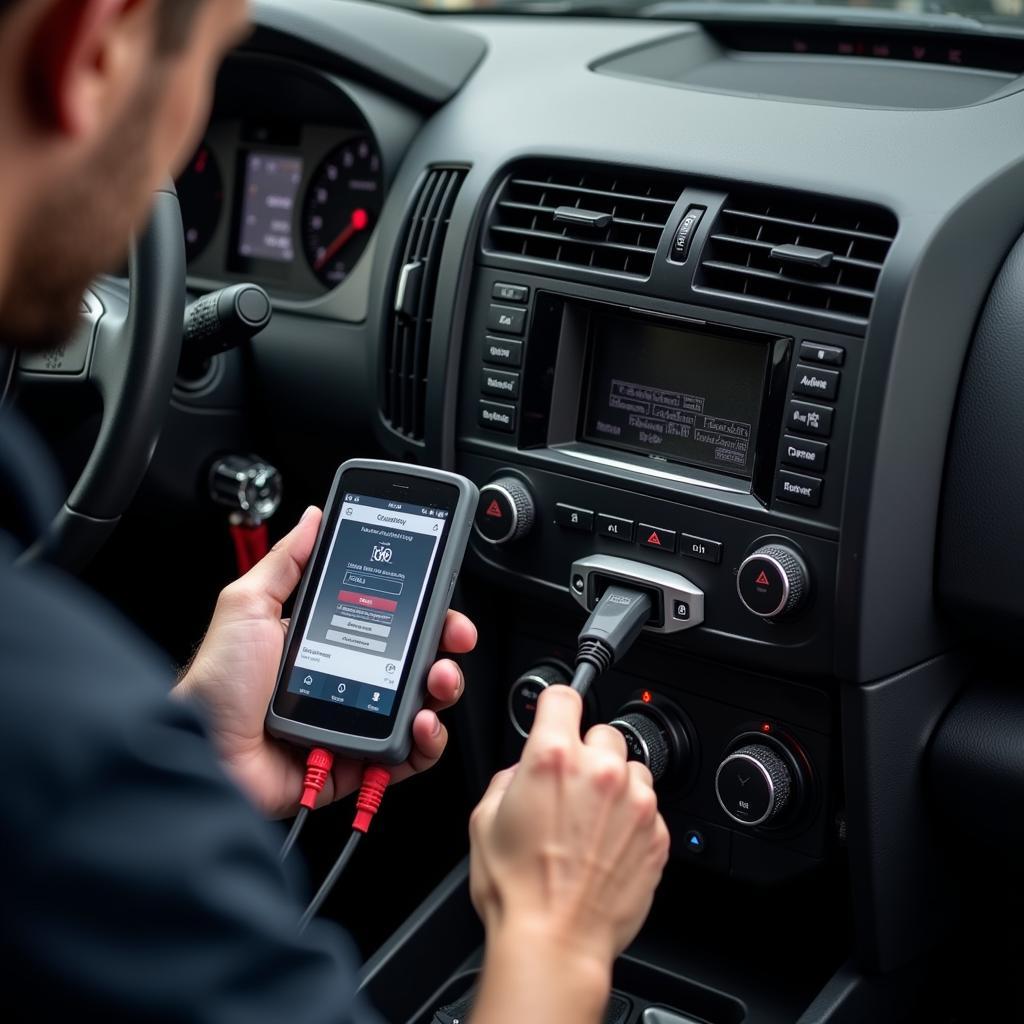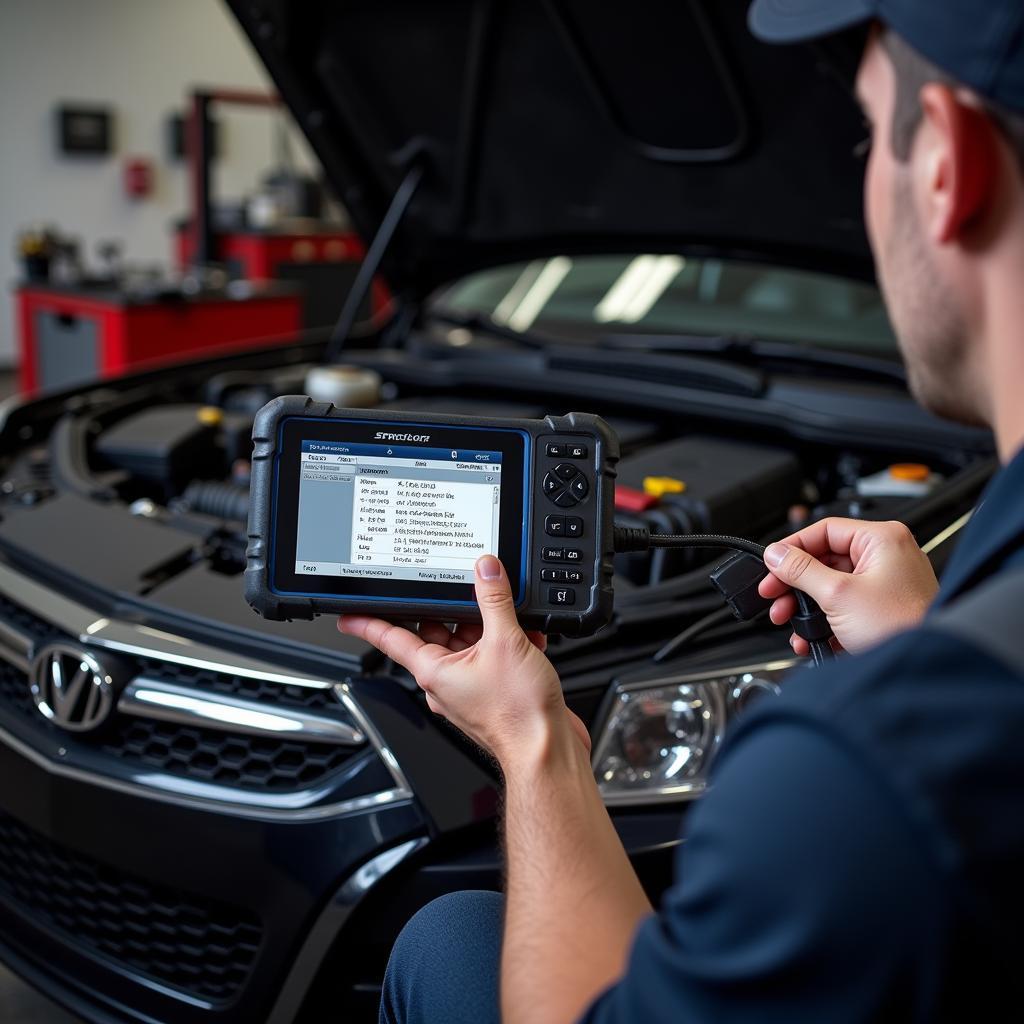The automotive repair industry is constantly evolving, with new technologies emerging to diagnose and repair vehicles more effectively. One such innovation is the bi-directional diagnostic tool, a powerful device revolutionizing how technicians approach vehicle diagnostics. But are bi-directional diagnostic tools better than their traditional unidirectional counterparts? This article will delve into the world of bi-directional diagnostics, exploring their capabilities, advantages, and why they’re becoming essential for modern vehicle repair.
Understanding Diagnostic Tools: Unidirectional vs. Bi-Directional
Before we can answer the question of “better,” it’s crucial to understand the difference between unidirectional and bi-directional diagnostic tools.
Unidirectional Scan Tools: The One-Way Street
Traditional, or unidirectional, scan tools are essentially sophisticated code readers. They connect to a vehicle’s onboard computer (ECU) and can:
- Read and display diagnostic trouble codes (DTCs): These codes provide a starting point for diagnosing issues.
- Display live data streams: This real-time information from various sensors helps assess engine performance and other systems.
However, unidirectional tools have limitations. They primarily provide information from the vehicle and lack the capability to interact with it directly.
Bi-Directional Scan Tools: A Two-Way Conversation
Bi-directional scan tools, also known as J2534 devices, take diagnostics a step further by enabling two-way communication with the vehicle’s ECU. This means they can not only read information but also:
- Send commands to activate components: This includes things like turning on the fuel pump, cycling solenoids, or closing relays for testing purposes.
- Perform calibrations and relearns: After replacing certain components, bi-directional tools can recalibrate them to factory specifications.
- Run active tests: This allows technicians to command specific components to operate, aiding in pinpointing faulty parts.
 Mechanic using bi-directional scan tool
Mechanic using bi-directional scan tool
The Benefits of Bi-Directional Diagnostic Tools
The enhanced capabilities of bi-directional diagnostic tools translate into numerous advantages for mechanics and vehicle owners:
- Faster, More Accurate Diagnosis: By interacting directly with vehicle systems, bi-directional tools can quickly pinpoint the root cause of a problem, saving time and guesswork.
- Reduced Parts Replacement Costs: The ability to test components individually through active tests reduces the likelihood of replacing parts unnecessarily.
- Advanced Troubleshooting: Bi-directional communication allows technicians to perform more complex diagnostic procedures, tackling issues that unidirectional tools might miss.
- Access to Proprietary Systems: Some vehicle manufacturers have proprietary systems that require specialized bi-directional tools for diagnostics and programming, making these tools essential for certain repairs.
- Future-Proofing: As vehicles become increasingly complex and reliant on software, bi-directional tools will be crucial for staying ahead of the curve in automotive repair.
When Bi-Directional Tools are Essential
While bi-directional tools are becoming increasingly valuable for general automotive repair, certain situations make them indispensable:
- Working on Modern Vehicles: Vehicles manufactured after 1996 have increasingly sophisticated ECUs, often requiring bi-directional communication for proper diagnosis.
- Diagnosing Complex Issues: Intermittent problems, electrical faults, and issues within modules often require the advanced capabilities of a bi-directional tool.
- Performing Module Programming: Replacing or updating control modules often necessitates bi-directional communication for programming and coding.
 Mechanic using a bi-directional scan tool for module programming
Mechanic using a bi-directional scan tool for module programming
Are Bi-Directional Diagnostic Tools Always Necessary?
While bi-directional diagnostic tools offer a significant advantage, they might not be necessary for every repair or every mechanic.
- Basic Repairs: Simple tasks like reading and clearing check engine lights or checking sensor data might be achievable with a unidirectional tool.
- Budget Constraints: Bi-directional tools typically come at a higher price point, and the investment might not be justifiable for hobbyists or small workshops with limited budgets.
Choosing the Right Bi-Directional Diagnostic Tool
The market offers a wide range of bi-directional diagnostic tools, each with varying features, capabilities, and price points. When choosing a tool, consider factors like:
- Vehicle Coverage: Ensure the tool supports the makes and models you work on, including access to manufacturer-specific systems.
- Software Features: Look for tools with user-friendly software, regular updates, and features relevant to your diagnostic needs.
- Technical Support: Reliable technical support from the tool manufacturer is crucial for troubleshooting issues and maximizing the tool’s potential.
Conclusion
The answer to the question “are bi-directional diagnostic tools better?” is a resounding yes in many situations. Their enhanced capabilities, improved accuracy, and ability to interact with increasingly complex vehicle systems make them essential for modern automotive repair. While they might not be necessary for every repair or every mechanic, the investment in a high-quality bi-directional diagnostic tool can save time, reduce costs, and equip technicians to handle the ever-evolving landscape of automotive technology.
Need help finding the right bi-directional diagnostic tool for your needs? Contact the experts at ScanToolUS at +1 (641) 206-8880 or visit our office at 1615 S Laramie Ave, Cicero, IL 60804, USA.


